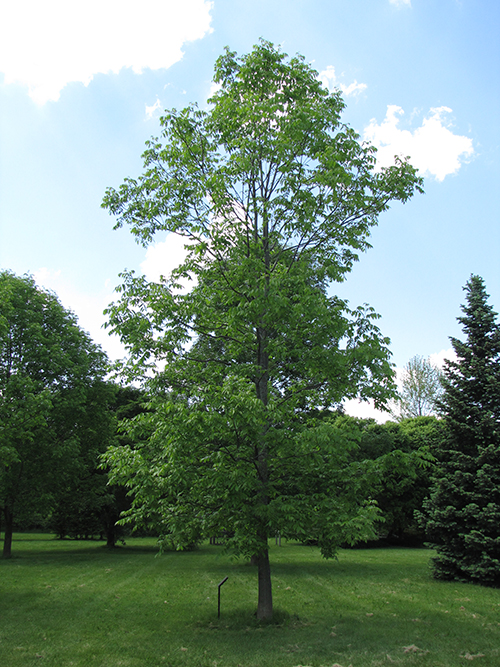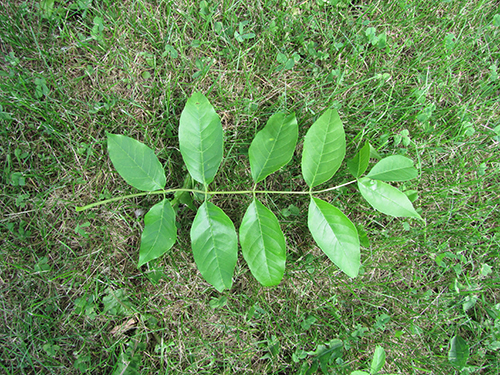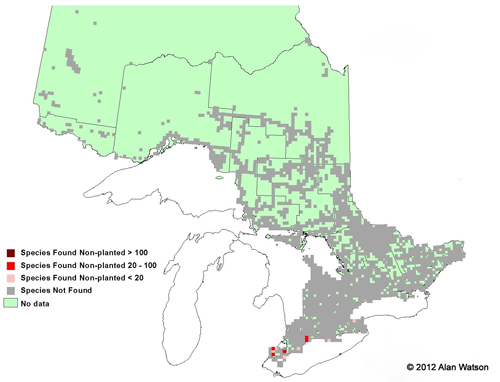pumpkin ash
pumpkin ash / Fraxinus profunda
This rare southern ash species was discovered in Ontario in the 1990’s, and has only been found in small pockets in wet, swampy areas. Similar to the red ash, the pumpkin ash can be distinguished from other ashes by the wooly stems and light hair on the underside of leaves. Pumpkin ash gets its common name from the bases of mature trees, which tend to swell in wet habitats, resembling pumpkins. This ash is also distinguished from its relatives by the much larger leaves and fruits. Pumpkin ash leaflets grow up to 25 cm. Many birds and mammals will happily eat the large (up to 8cm) samaras (winged seeds) in the winter. The seeds require several months of cool, wet conditions in order to germinate.

This shows the small grooves of young bark. Older bark develops deep grooves.

Form

The leaf showing the many leaflets

Ontario Tree Atlas map of non-planted Pumpkin Ashes. 1995-1999.
References
Farrar, J.L.. 1995. Trees in Canada. Fitzhenry & Whiteside Ltd. Toronto. ON. 504 pp.
Kershaw, L. 2001. Trees in Ontario: Including tall shrubs. Lone Pine Publishing. Edmonton. AB. 240 pp
Muma, W. 2011. Ontario Trees and Shrubs. [Online] Available: www.ontariotrees.com
OMNR, 2011. Ontario Ministry of Natural Resources: Ontario Tree Atlas. [Online] Available: http://www.mnr.gov.on.ca/en/Business/ClimateChange/2ColumnSubPage/267027.html
OMNR, 2008. Ontario’s Biodiversity: Species at Risk.